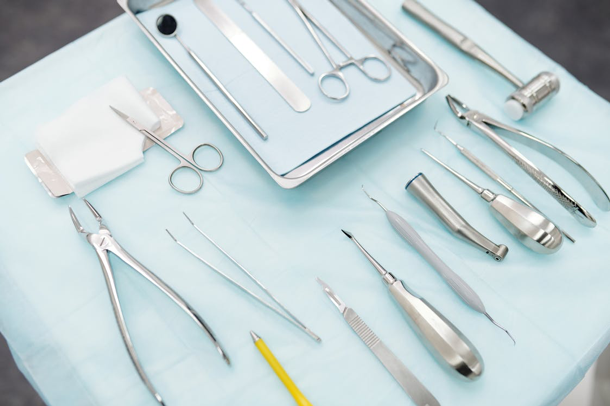What is a urethral stricture? The urethra is a tube that transfers urine from the bladder to the penis. This hollow tube starts from the lower bladder opening, stretching throughout the length of the penis. In women, the length of the tube is around 2.5 to 4 cm in length. The opening of this tube is short in contrast to men’s, stretching from the lower bladder. The urethral sphincter is a muscle surrounding the urethra in both women and men. This muscle keeps the urine inside the bladder by closing the urethra. The muscle relaxes before urination, allowing the urine to pass through the urethra from the bladder.

(Source)
Causes of a Urethral Stricture
The urethral stricture shrinks the opening of the urethra. This usually happens when the tissue starts to swell because of scar tissue. The tissue might scar for numerous reasons and factors. Men with penile implants and young boys with hypospadias surgery have a higher risk of developing urethral strictures.
A common type of trauma, straddle injury, may lead to urethral stricture. For instance, if you fall on fences and hit the area near your scrotum, you might develop a straddle injury. Here are some other causes of urethral stricture:
- Catheter insertion
- Pelvic fractures
- Radiation
- Benign prostatic hyperplasia
- Prostate surgery
Here are some rare causes of urethral stricture:
- Chlamydia, gonorrhea, or other sexually transmitted infections
- Repetitive or untreated urinary tract infections
- A tumor developing near your urethra
Symptoms of Urethral Stricture
The most common symptom of urethral stricture is a weak urinary system. Here are some symptoms of urethral stricture:
- Pain while urinating
- Straining when urinating
- Prostatitis
- Urinary tract infection
People who are unable to develop severe urethral strictures lose their ability to urinate. This is a medical emergency, and you can refer to it as urinary retention. Renal failure and hydronephrosis might occur due to poor drainage of your bladder, and it fills in the kidney.
The urethral stricture will lead to inflammation in the prostate region. The prostate surrounds the urethra under your bladder. You can refer to this condition as prostatitis. You might develop a urinary tract infection due to urinary backup. You can manage this condition using antibiotics and treating the urethral stricture. More importantly, you should visit a urologist for diagnosis and suitable treatment options.
Diagnosis of Urethral Stricture
Your doctor will use different approaches for the diagnosis of urethral stricture:
· Understanding the Symptoms
When you visit the doctor, they will ask various questions to identify the symptoms you are experiencing. You can also self-report the symptoms if they are prominent. Furthermore, the doctor will ask about your medical history to recognize the risk factors of the condition.

(Source)
· Undergoing Physical Examination
The urologist will perform a simple physical examination and try to identify the urinary stricture. For instance, the possible symptoms that the doctor will observe while the physical inspection is redness, swell, and harness on the penile region.
· Conducting Tests
To identify the condition and diagnosing the urethral stricture, the urologist will also perform these tests:
- Gonorrhea or chlamydia
- Measuring urethral opening’s size
- Measuring flow rate while urinating
- Analysis of chemical and physical urinary properties and determine the presence of bacteria.
- In this diagnosis process, the urologist will insert a small tube containing a camera. This device helps the doctor to view the urethra and bladder. This way, they can ensure the presence of the condition.
Treatment of Urethral Strictures
The treatment process will depend on your condition’s severity:
· Nonsurgical
Dilator – The urologist will use a dilator to widen the urethra. The dilator is a medical instrument and helps with the primary treatment mode. This procedure is outpatient, and you can return home after the treatment. The doctor will pass a small wire in the bladder through the urethra and start dilating. After some time, the urologist will start using the larger dilators to increase the urethra’s width.
Catheter – In another nonsurgical option, the urologist will insert a urinary catheter permanently. Doctors only opt for this treatment in severe cases. This procedure has risks such as urinary tract infection and bladder irritation.
· Surgery
If nonsurgical treatment does not work, the urologist will perform surgery to remove the affected tissue. For severe and longer stricture, you can go through open urethroplasty. The urologist will remove the tissue and reconstruct the urethra.
· Urine Flow Diversion
In severe cases, the urologist will use the procedure for complete urinary diversion. The surgeon will reroute the urine to the abdomen’s opening. They will use the intestines and connect the opening to the ureters. The surgeon will perform this treatment when they find the need to remove the damaged bladder.
Other Surgical Options for Urethral Stricture
The surgeon will recommend you, anyone, out of these surgical options, depending on your condition:
- DVIU or direct vision internal urethrotomy
- Urethral dilation
- Open urethral reconstruction
- Urethral stent placement
Urethral Strictures: Conclusion
If you experience pain or strain while urinating, consult with one of the best urologists in New York City, Dr. Yaniv Larish. You can set-up an appointment with the urologist by contacting us at 212-675-3186 or visit our main website to learn more: Fifth Avenue Urology.
